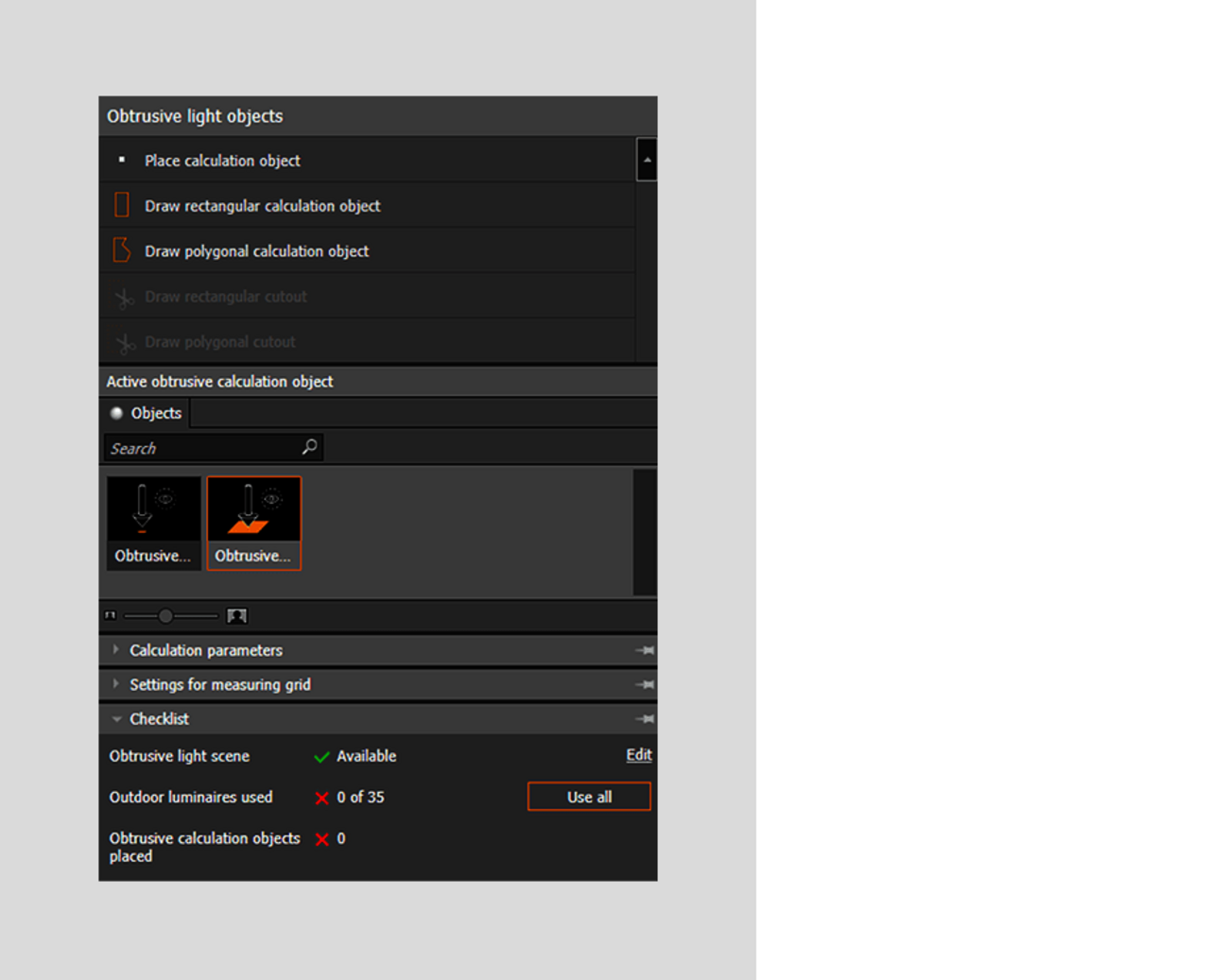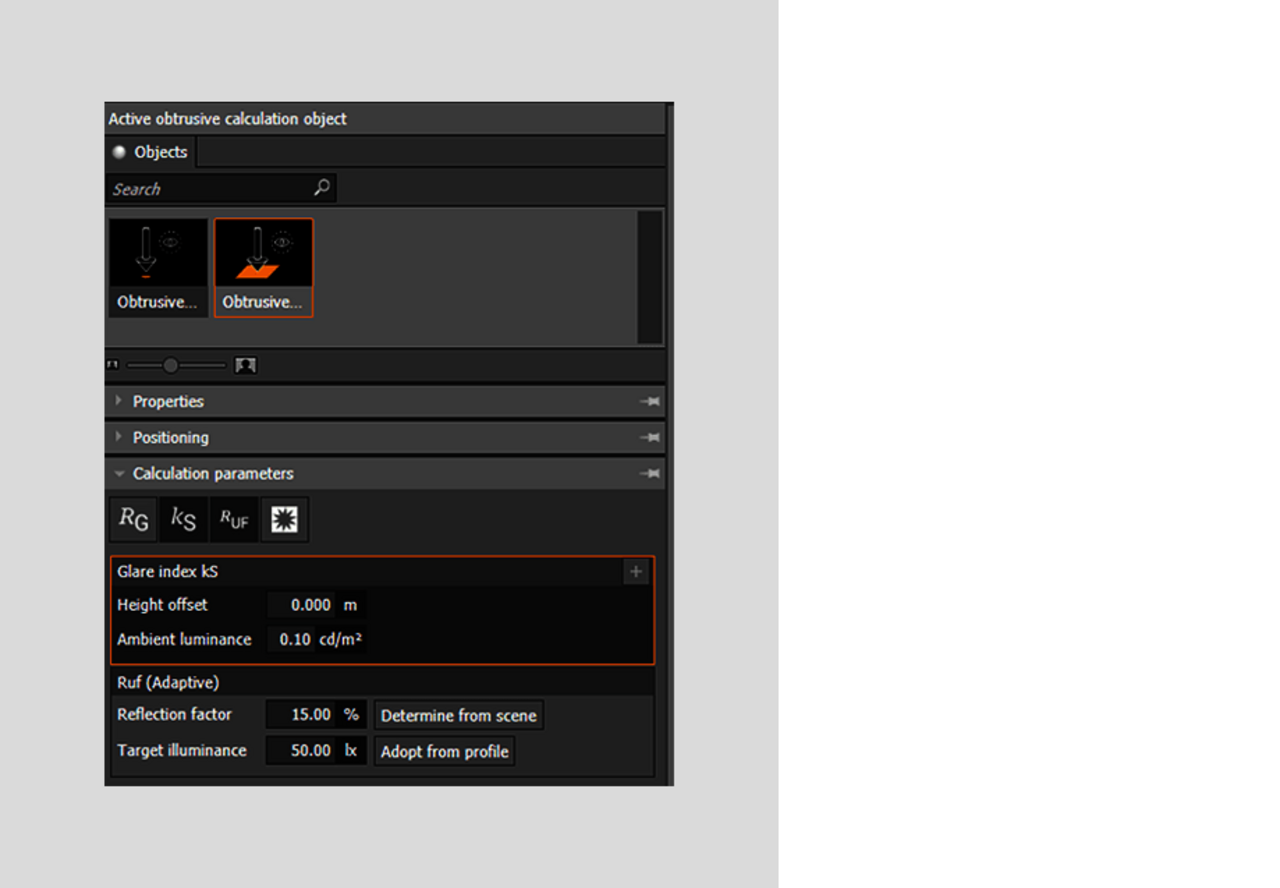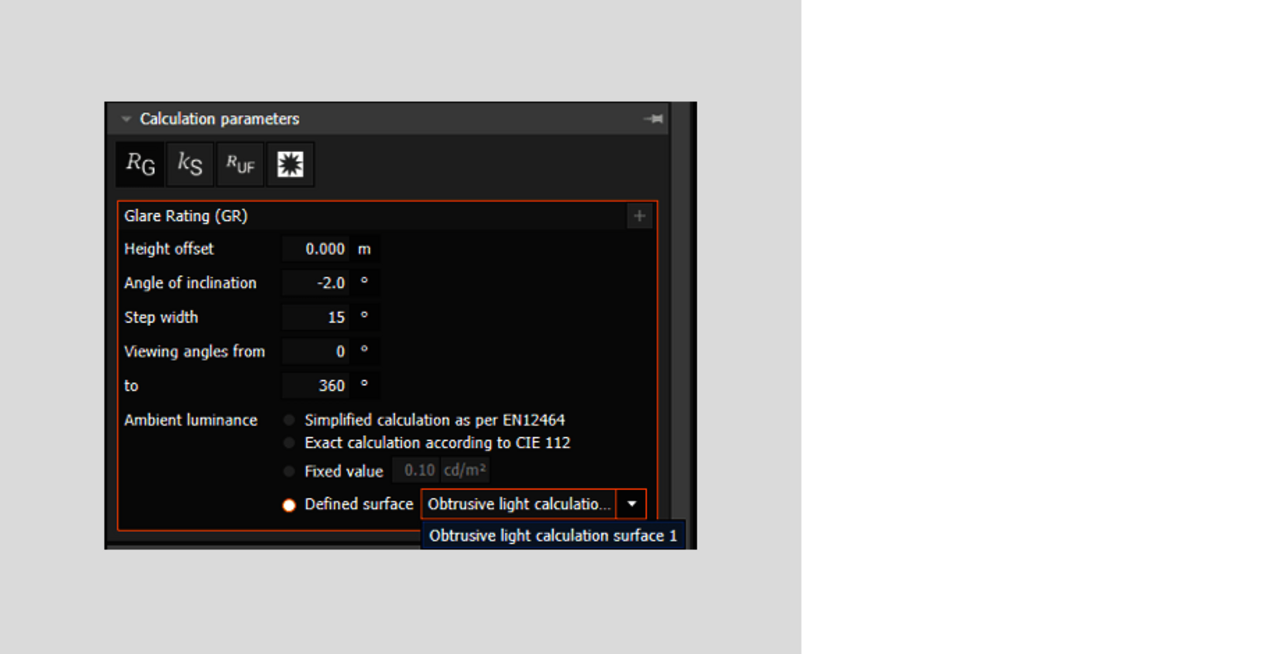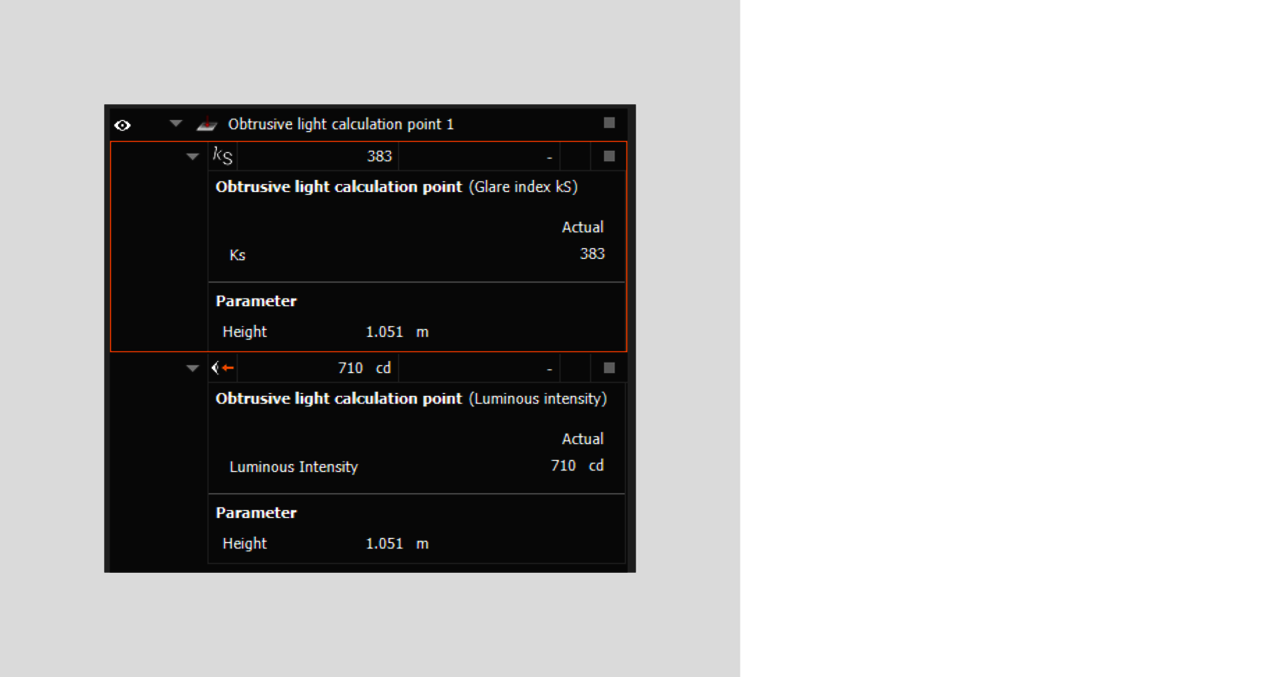Outlook: Obtrusive light calculation in DIALux evo

In addition to the aesthetic requirements, planners of lighting systems must above all deal with the normative requirements for indoor and outdoor areas.
For outdoor areas in Europe this is often the EN-12464-2 "Light and lighting - Lighting of workplaces - Part 2: Outdoor workplaces" and the underlying CIE150. Together with the desired lighting requirements, it also describes those components of light that should be avoided as far as possible in order to prevent errors or even accidents, such as glare and obtrusive light.
We've diligently worked on enhancing the obtrusive light, and are happy to present its current status.
The obtrusive light scene calculation with new values has been ready to use for a while now in the testing environment. We've added some great shortcuts and helpful tips to make creating light scenes and selecting luminaires easier. Now there is also a checklist in the tool for obtrusive light that shows you what is missing!

The calculation parameters for obtrusive light differ from those for normal calculations. That is why we have created a separate section for obtrusive light in the calculation settings.

We have developed brand new calculation points and grids especially for obtrusive light values: ks, I, Ruf. The call grid requires additional parameters such as target illuminance and reflection, which you can take directly from the scene.

Finally, we now have a new calculation area for veiling luminance. You can use it as an alternative to the previous calculation for the GR calculation or simply define the background veiling luminance as a fixed value.

We are currently working on the following points:
- The new results must of course be displayed in a more accurate way in the results monitor. The current display with average and minimum values is unfortunately not very suitable for this. In addition, the results should also be documented in the calculation object list.

- The luminous flux ratios Rulo, Rdlo and Rul should be displayed for the prototype luminaire, the selected luminaire with inclination and for the entire scene. This is proving more difficult than expected, but we are already on the home straight.
This completes the first step of our obtrusive light development. We are still discussing whether and how we will publish this development step. But one thing is certain: we will share this result with some of you soon and incorporate your feedback into the upcoming development.
In the next step, we plan to compare the calculated values with the existing standards and incorporate special outputs for the obtrusive light objects.
Stay tuned!